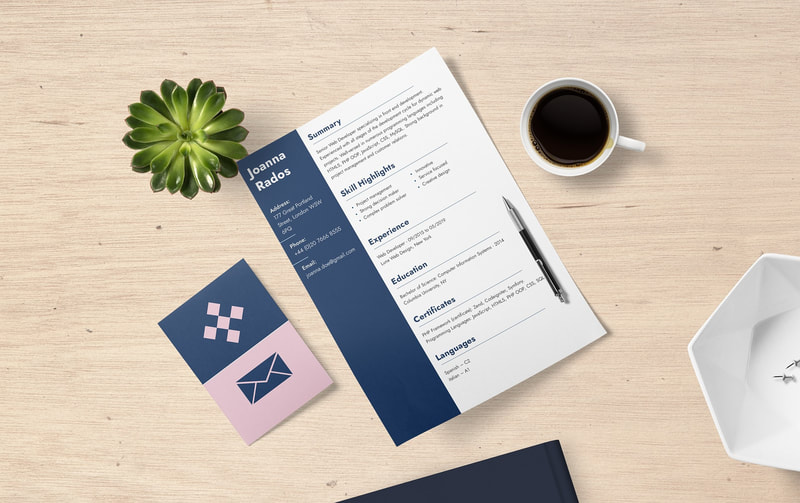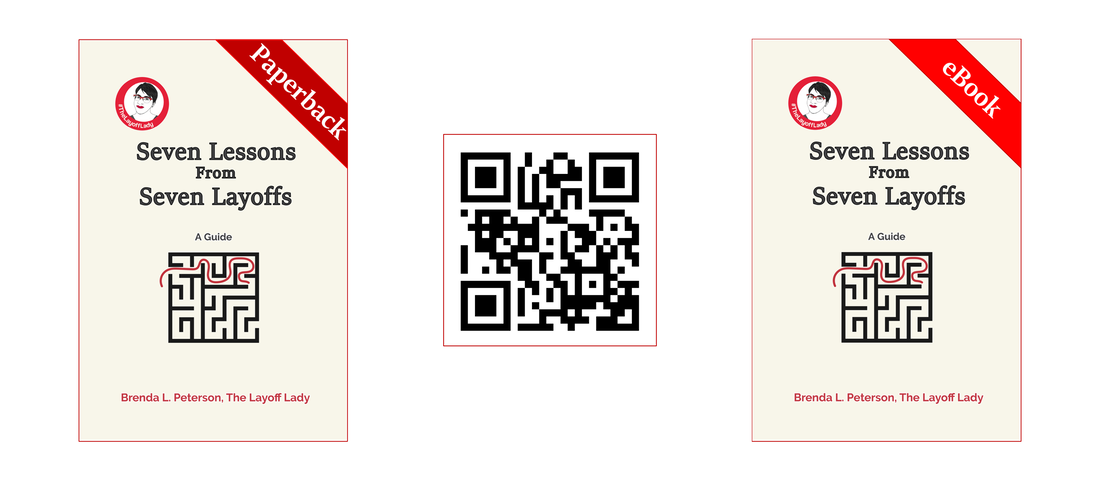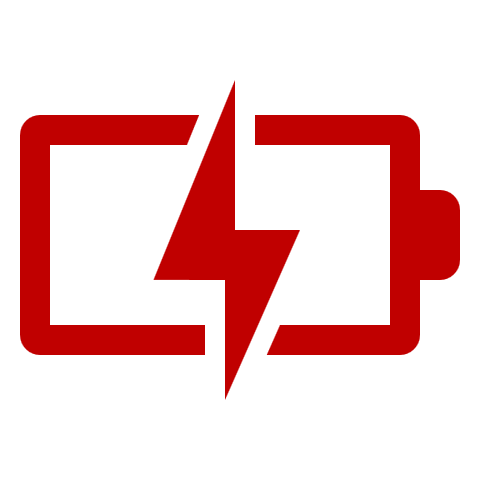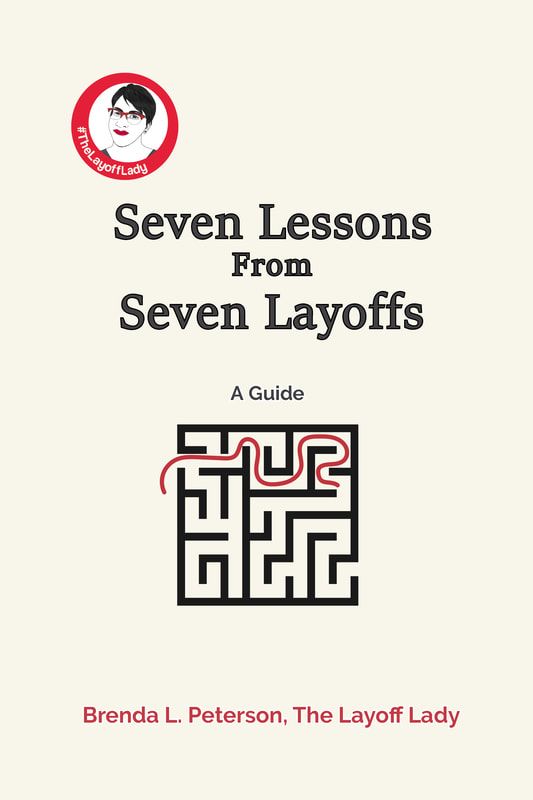|
By Brenda L. Peterson, The Layoff Lady Resume ObservationsRecently, I have talked with many colleagues who are proactively updating their resumes. After we talk a little about what type of a position interests them, I usually give them additional feedback about preparing a resume to apply for a specific job. As a many-time hiring manager, I have seen lots of bad and lots of sort-of-okay, and just a few resumes that were really, really good. For me, a resume needs to answer three fundamental questions. Having a resume that addresses each of these will helpg you get you out of the no pile and into the “I am excited to talk with them” pile. Question 1: Does This Person Want This Job?In a previous job, I was working on filling an instructional designer position on my team at a software company. I received one resume where the person’s career objective stated that they wanted to be a curator at a museum. The good news: this person knew what they wanted and made it clear in their resume. The bad news: they didn’t want the job I had available. Most (like maybe a good half) of resumes that end up in the “no” pile are so nondescript that they could be applying for any number of office positions. Once, when I was hiring for a technical trainer position, I received a resume for someone with a lot of experience working as a corrections officer. The good news: this person had many potentially transferable skills. The bad news: I didn’t know if this person was interested in this particular role or was mass applying for anything that wasn’t their current job. Overall, do just enough tailoring on your resume, so the hiring manager knows you are interested in the available job and applied for it on purpose. Given how costly a bad hire can be, help the hiring manager know that you want to do the job in question. Question 2: Can This Person Do The Job?Once I know a given candidate wants the job, I look for some indication that the person has the skills to do the job. Some candidates’ work experience is neat and tidy and points logically toward the open role. For example, they were a call center representative, then a senior call center representative, then a call center supervisor, then a call center manager. If they were applying for a call center manager position, from their job titles alone, I could be reasonably sure they could do the job. With that, adding in keywords from the job description and adding details about their previous education and work responsibilities as they relate to this specific position, it’s not a stretch to think they are qualified. If the candidate didn’t have much experience in a similar role, I’d expect them to describe what they did in previous positions and show how their work experience prepared them for this role. For example, if I’m hiring for an instructional designer position, the job description might include “collaborate with subject matter experts to create learning materials for client-facing courses.” If someone with a background as an elementary school teacher applies, they should show how their previous work experience relates to the available position. For example, they might include “collaborated with subject matter experts in the media center to create learning materials for a course for parents on encouraging their children to read more.” Without emphasizing those transferable skills, I might not be convinced they could perform the required tasks. Overall, be sure to make it apparent that you can do the core tasks that the job requires. Question 3: If I Hire Them, Will They Stick Around?Filling an open position takes a long time and is a huge gamble. The goal is to find someone who wants the job, can do it, and will want to be in that position (or a part of your organization) for a good long time. This part of resume assessment is teeing up the phone screen and helping me determine the questions I need to ask. For example, will this salary be in line with their desired salary range? Will they be happy working from the office or working from home for the amount required? Will they work well with this organization's structure and formality level? Will they want to travel as much (or as little) as is needed with this job? Are they going to be happy managing or not managing people? As a hiring manager, details in the resume are helpful as a starting point for those questions. Sharing information on what you want in a role, and drawing comparisons between the role you're applying for and your preferences, wil help make this more clear. Learn More
0 Comments
by Brenda L. Peterson, The Layoff Lady Interviewing for a New RoleAs a many-time layoff survivor, I have done quite a few job searches and had lots of interviews. Not long ago, I read an article about a job searcher who opted out of one hiring process. He did this after making it through three rounds of interviews and having the organization ask about arranging the next six (yes, 6) rounds of interviews. I felt compelled to share my story about one seemingly never-ending interview process. Unfortunately, like with many things in life, it took a bad experience to teach me how to make better decisions. Job Interviewing Boundary Setting is HardLet me start by taking a moment to acknowledge that this is not always easy to do. It is hard to set boundaries when you’re hip-deep in a job search, especially when you’re unemployed. The longer the search goes on, the easier it is to tell yourself that you’ll summit Everest if a potential employer asks you to as part of possibly FINALLY getting a paying job. Consider this your reminder to realize that jumping through more and more hoops doesn’t necessarily mean that you’ll end up with a job at the end of the process. Do your future job-searching self a favor and think through what your boundaries are when it comes to participating in a given company's hiring process. (We'll revisit this a little later.) The Perfect Job! (or was it...)During this particular job search, I was laid off at the end of the summer. From previous job searches, I hoped to find a new position before Thanksgiving because otherwise, it might be until February or March before I secured a new role. I was very excited when I ran across THE PERFECT JOB! It was an opening for a training director position within an easy commuting distance where I even knew someone who had connections within the organization. Lesson Learned: Don’t fall in love with a job. Even if it seems like “the perfect job,” it is not yet “your job.” Apply, and hope for the best, but keep on applying. Until you have an actual accepted job offer, it is not “your job. The Inside ScoopI met with my professional connection, and they filled me in. I learned about the organization, their clientele, their mission, the key players in the hiring process, and helpful background information. My connection even put in a good word with the organization (they had left on good terms.) I also learned that the company had some turnover in this position, so they were trying to make sure they did their due diligence and hired the right person this time around. Lesson Learned: Gather and synthesize information even when you’re excited because you found THE PERFECT JOB. This company having gone through two people in the role in a relatively short time period and being concerned about making another hiring misstep is something I heard and noted. Still, I didn't really take it to heart. In this case, the company was trying (maybe a little too) hard to hire the right person for the role. It may have also indicated something about the company or the position that caused people not to stay. My future self knows to synthesize information more carefully--and not overemphasize only the good things. The Phone InterviewsI applied, and my connection put in a good word for me. The company quickly reached out to me for an initial phone screen. Then a phone interview. Then another phone interview. Then yet another phone interview. After four phone calls—each where the new interviewer seemed excited about me as a candidate and talked about who else I needed to talk to—I started to wonder what the game plan was for this whole process (aside from their overwhelming and often stated goal of not to make a hiring mistake). Lessons Learned: In the initial phone screen or the first interview, ask about the hiring process. This includes their estimate of when this process will be over (a week? a month? 6 months?) and the critical steps in the process. Decide your boundaries and be ready to decide the number of hours you are willing to dedicate to interviewing for this role. Remember, you are interviewing them, too. Make no assumptions. Don't get so excited that they keep wanting to talk with you that you keep going, not knowing how many hoops there are to jump through. The Work SamplesIn addition to talking to different interviewers on multiple occasions, the company wanted to see instructional design work samples from me. I emailed work samples and reviewed them with a subject matter expert who was well-versed in adult education and instructional design. They complimented me on the trainer guide, videos, and job aids I had created. They told me they were impressed with my work and learned from what I told them. At this point, they told me the next step was for me to meet with the company founder. Lessons Learned: Have a portfolio online that people can access, or let people know that you are happy to review work samples (and your process) with them in an in-person or Zoom meeting. I keep my work samples online with a note that these are intended to showcase my work and that they are not to be downloaded and distributed. The Zoom MeetingsI was excited to meet the company founder, who was also a published author. In preparation, I bought and read their most recent book, researched their accomplishments, read their blog articles, and reviewed their body of work. During the interview, we had a great conversation, which included a lot of “when we work together” and “next steps” language. This meeting was followed by multiple Zoom meetings with different stakeholders (again, one at a time) explaining the next steps in this process—which they called an “in-box experience.” During this phase, I would come into their office and work for a half day. I would have a chance to interact with multiple people I would work with, including consultants and a client. This would require me to sign a non-disclosure agreement, work on a project for an actual client, and present information to a client. Lessons Learned: No matter how many interviews you have, or how much they seem to like you, remember you do not have the job until they have made you an offer and you have come to an agreement about your compensation. Remember that the goal of this process is that the employer decides if they want to work with you, and you decide if you want to work with them. Looking back, I'm frustrated with myself that I invested SO MUCH TIME with this potential employer without talking about salary expectations. The In-Box ExperienceThe Wednesday before Thanksgiving, at 8:00 am, I arrived at the company's downtown office location for my in-box experience. I brought my computer and the work I had done so far. (BTW--there was a project and pre-work that I did, which took way too long. Holy time suck.) I was told that I needed to use their computer for my work that day. During the four hours that I was there working (for free) for them, I had an in-person panel interview with people I had talked with via phone, interviewed via Zoom with a consultant, ran a project meeting, completed work on instructional materials for a client, and got feedback on my performance along the way. I had a final conversation with one of the decision-makers before ending my day. I was told I'd hear back early the following week. Lessons Learned: Determine ahead of time how much you are willing to do for a role, and when to call it. Remember, you're interviewing them, too. And, for the love of God, don't do a ton of unpaid labor for a business that is not paying you for your work product. Thanks, But NoIn the middle of the following week, I got a call. It was very brief. Thanks for my time, but they had decided not to proceed with me as a candidate. If I like, though, they would be willing to add me to their possible consultant database for future contract work. Lesson Learned: Never again. In short, I spent about 45 hours total, including about 15 hours of unpaid work that I did for the company, to end up with no job offer. Time to transition all of these lessons learned into new personal guidelines. My Fancy New Job Search BoundariesRemember the boundary setting I mentioned before? Here's where we revisit it. After going through this process (and getting mad all over again while writing this article), I am reminded of the outcome of those lessons learned for me.
Learn MoreBy Brenda L. Peterson, The Layoff Lady About The Seven Layoff LessonsThrough my seven layoffs and many conversations with others in post-layoff career transition, I have learned seven core lessons:
About Layoff Lesson Seven: Assess, Adapt, and Rise AboveWhen you’re searching for a new job, there are always challenges. Like with any system you put in place to solve a problem, it’s helpful to compare the actions you’ve been taking to your results. It's valuable to review where you are getting stuck during the hiring process and updating what you're doing so you can see more success. Let's look at some of the challenges you might face. Interview Progression IssuesAfter you apply for a job, your goal is to be selected for an interview. That process usually includes an initial phone screen, one or more face-to-face interviews, and then a job offer. Let’s look at possible places you might get stuck and how to evolve your approach.
Additional Job Search ChallengesEven when you have good results with your overall job search and hear back from companies on specific roles, you’ll still face challenges. Let’s look at a few:
You are the CEO of YouAt the end of the day, remember your role as the CEO of You and make a decision that aligns with your overall career and life goals. That might mean adjusting your requirements as your search goes on or holding out for what you really want. You get to decide what matters most to you and change your mind as needed. For The Whole StoryFor all the information on each of the seven lessons pick up a copy of my book Seven Lessons From Seven Layoffs: A Guide. Learn MoreBy Brenda L. Peterson, The Layoff Lady About The Seven Layoff LessonsThrough my seven layoffs and many conversations with others in post-layoff career transition, I have learned seven core lessons:
About Layoff Lesson Six: Examine Your Energy to Take Control of Your TimeEven when you have a general idea of what needs to happen, sometimes it’s hard to translate higher-level information into specific activities. Sometimes, even when you have a clear sense of your goals and a well-written to-do list, another obstacle remains. Even when you know what your top priorities should be and how urgent those tasks are, you still can't manage to get those crucial things done. How is that even possible? In short, it all comes down to our energy. When life is puttering along as planned, we don’t have to spend undue effort living our everyday lives. Post-layoff, a lot changes. Losing your job upends your life and gives you a whole new set of challenges you simply have to figure out. These problems also come with uncertainty about the future, new complexities in your financial life, and anxiety about how long it might take to get back to something that could be called normal. You are now entering an unplanned phase in your life where you will experience more rejection in a shorter period of time than ever before. All of this change and rejection can take its toll. Managing Your MindsetBe sure to leverage your Realistic Optimist mindset by reminding yourself that good things are coming—as long as you put the work in to get there. While you can accomplish a lot, you’ll never be able to do absolutely everything that may contribute to your success. Instead of setting unrealistic expectations for your ongoing productivity, you need to prioritize where you spend your energy and your time. Leading and Lagging IndicatorsWhen pursuing a big goal, it's important to focus on taking the small steps that will help you achieve your larger goal. Many times, we think of the end goal--for example, an accepted job offer is one of the ultimate measures of job search success. Having a new job is a lagging indicator. That means that it is a big goal that won’t happen for a while and has many contributing factors. Too often, people overfocus on achieving a big goal (lose 50 pounds, write a book, run a marathon) but skip over the smaller steps that build toward that huge goal. This is where leading indicators come in. Leading indicators are all of the tasks you need to complete to position yourself to achieve that bigger goal. Leading indicators are those smaller, checkoffable things you can control. For job searching, those might be applying for three jobs a week, sending LinkedIn connection requests for two people per week, and sending thank you notes after an interview. Consistently doing those leading indicators will help you achieve those lagging indicators. All Hours Are Not Equally ProductiveWhen I’m in career transition, I spend a lot of time writing, applying for jobs, and interacting on LinkedIn. I also tend to rewatch TV shows and movies. Conventional time management would say that I’m wasting a good chunk of my life. In reality, it is not feasible to produce noteworthy results all the time. Achieving at a high level requires preparation and adequate recovery time. That means if I have two video interviews in one day, I will appear to be doing nothing for those couple of hours right afterward. The only way I can knock those interviews out of the park is by managing my energy well. Reflect on Factors Influencing Your EnergyAs you think about how to spend your time, learn about yourself and when you will be the most productive and happiest with each activity. I interact with LinkedIn posts during my first cup of coffee, enjoy afternoon walks, and do yoga at night before bed. There are no absolute right or wrong times for most things, just ones that are a better fit for you. Take time to reflect on your most and least productive times of day. Do you excel in the morning, or do your best work late at night? How much structured time do you need? How much social time do you need? These answers will help you gain a sense of how to get the most out of each day. Energy Builders and PrioritizationPlain and simple, there is not enough time to do everything you could possibly do. Therefore, it’s crucial to prioritize your time. This helps ensure you are doing the highest value activities that get you closer to your goal. Know that saying yes to higher-value activities--like having a job interview or meeting with colleagues--means you’ll have to say no to other activities. If socializing drains you, you may skip a social gathering and rest to recover and prepare for other job-searching tasks. Also remember that energy builders, like resting, walking outdoors, or medication, can help you sustain the energy levels needed to work toward your goal for as long as it takes. For The Whole StoryFor all the information on each of the seven lessons, pick up a copy of my book Seven Lessons From Seven Layoffs: A Guide. Learn More |

Just get laid off?
Click here for info on what to do first. Author7-time layoff survivor Brenda L. Peterson, The Layoff Lady, waxes poetic on layoffs, job transitions, & career resilience. Buy The Book!Were you recently laid off from your job and need a roadmap for what's next? Pick up a copy of my book, Seven Lessons From Seven Layoffs: A Guide!
Categories
All
Archives
July 2024
|










